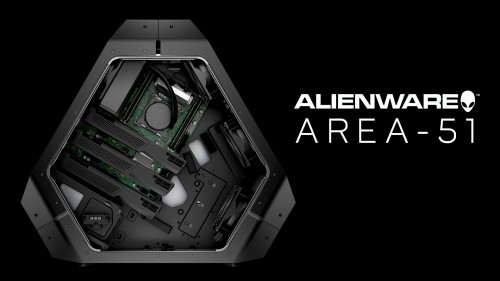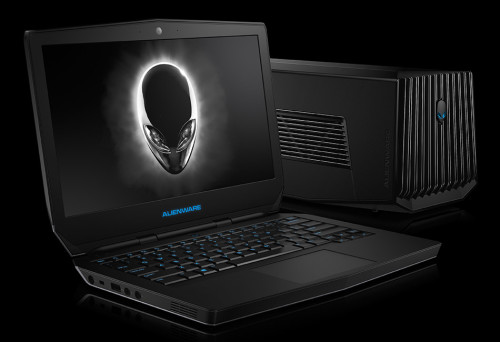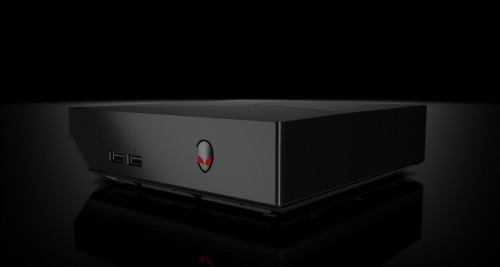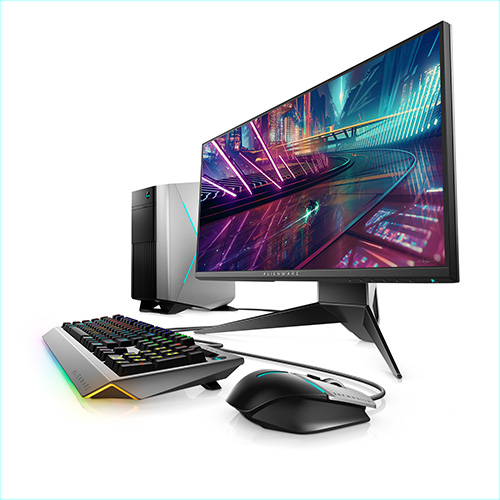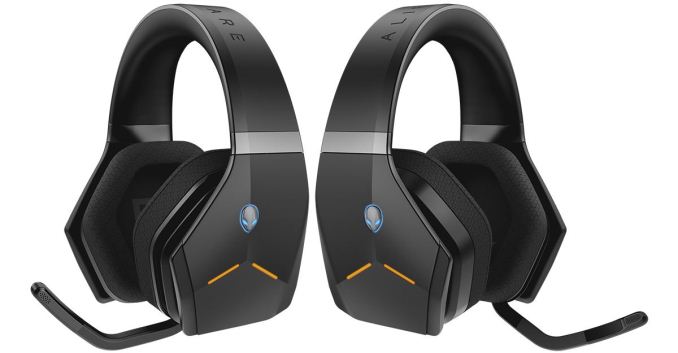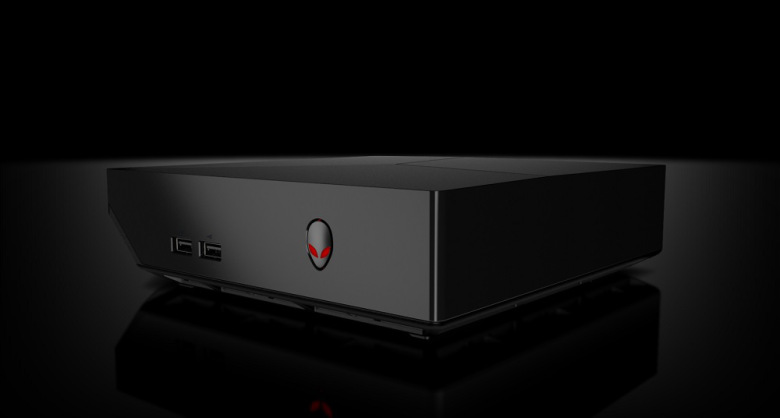
Maybe you saw us floating around. Maybe you didn’t. Regardless, Rocket Chainsaw was at PAX AU 2014. We checked out the games, the booths, the indies, and the developers, and we were sure to swing by the surprisingly heavy showing of PC hardware, tech, and goodies. Tech and peripherals had a presence almost on the same wavelength as the games themselves. And that of course meant Alienware, the Dell-owned branded PC enthusiast company, was right there alongside all others. Joe Olmsted, Alienware’s Director of Product Planning, was there too, mainly to show off three new Alienware products: the Alienware 13 laptop, Area-51 desktop PC, and the fancy new Alienware Alpha game console.
Three products for three different markets. I had to check them out.
That picture above? That’s the Area-51, a high-end super duper enthusiast PC built for people with serious money to spend. And those who like unorthodox shapes. Though several models are available, the gist is of the system is one with an i7-series 6-or-8 core processor (overclocked by Alienware), between 8 to 16GB of fancy new DDR4 RAM, and a GPU range of a single AMD Radeon R9 270 2GB to two Nvidia 2GB GTX 770s. What you’ll get depends on how much you’re willing to spend, but even so the Area-51 is built with customisation and tinkering in mind. It is a PC after all.
Speaking with Olmsted, the unusual shape was born out of a desire to do something a little different, and provide a more sensible ventilation solution for the intense heat inevitably generated by the hardware guts. As we all know, hot air rises, and the Area-51 is built in such a way that GPU and fan placement guide said hot air naturally out of the system’s angled top vents without putting undue strain on forced side ventilation. Hell, even the CPU has it’s own liquid cooling solution.
Olmsted also stressed that the form factor isn’t just for cooling (though this is a massive benefit), but also for accessibility, avoiding the usual reach around for USB and disk ports on the flat vertical panels of traditional towers. Here everything is angled nicely in such a way that you can kinda just look down and plug stuff in.
The demo unit on display had three GTX 770s plugged in for triple SLI. I asked if I could have one. They said no.
Then there was the Alienware 13 Laptop, a solution for enthusiasts who game on the fly but don’t want to sacrifice too much performance. Olmsted painted a pretty clear picture of this one; where other laptop companies stress wafer thin form, the Alienware 13 disregards this to keep the guts beefy and cool, as well as provide users with an Ethernet port. Wifi just isn’t good enough for multiplayer.
Like the Area-51, the Alienware 13 too comes in a variety of configurations, generally slower and less advanced hardware than its desktop brother (more on that in a minute), but still impressive. i7-series CPU, up to 32GB DDR3 RAM, and dual Radeon R9 M290X GPUs (2x4GB).
But what makes the Alienware 13 laptop that bit more unique is what Alienware calls the “Graphics Amplifier”. Basically it’s a box that that acts kinda like half a PC: a simple motherboard, power supply, and upgradable (by you) GPU. The idea is you take the Alienware 13 on the fly, and when you get home plug it into your Graphics Amplifier for extra oomph. To assist with this Olmsted explained that the Graphics Amplifier / laptop combination comes with an Alienware patented PCI-E cable, offering the same speeds and efficiency between the two devices as you would from a GPU plugged directly into a MBO. Once plugged in the Alienware 13 recognises the more powerful GPU and switches over to that for rendering. In theory, you could keep upgrading your Graphics Amplifier for gaming at home, and just stick with the laptop’s hardware for when on the road.
Olmsted wrapped up the Alienware 13 + Graphics Amplifier combo with a good point; everybody hates when a cord, whatever it is, is yanked from an active system. In the world of PCs if you were to suddenly pull your GPU out of your MBO the entire system would crash. Alienware’s solution avoids that. If, for whatever reason, the the PCI-E cord should be pulled from the Graphics Amplifier while the laptop is active the Alienware 13 will simply atomically switch over to its internal hardware and keep running. Winner winner chicken dinner.
Finally, and perhaps most importantly, Alienware showed off the Alpha. If you haven’t been following, the Alpha is Alienware’s answer to the (now delayed) Steambox; a simple, streamlined PC for the lounge room aimed at a market that wants PC equivalent specifications and features but also doesn’t want a gigantic tower sitting next to the TV. And also for those intimidated by what can often be the daunting PC enthusiast market. It’s sleek, it’s tiny, and (surprise, surprise) it’s available in a multitude of revisions.
While the hardware configurations vary, Alienware’s goal is for each system to play games at 60fps@1080p on standard settings. Bundled with an Xbox 360 control pad, the ability to plug-and-play is key. Olmsted assured me that despite technically running Windows 8.1 as its operating system, the Alpha can act just like a console, booting straight to Alienware’s custom, simplified GUI to easily install and play games.
However, much like the Steambox the Alpha also provides enthusiasts with room to tinker. The GPU is the only hardware component locked down, everything else (RAM, CPU, etc) upgradeable with off-the-shelf parts. Additionally, Alienware has included custom ports and features intended to support Valve’s Steambox controller (among other things) when the latter company’s streamlined PC solution finally hits. And even though it boots to Alienware’s GUI, if you really want you can switch straight back to a standard Windows interface or install Steam OS. It is, in all respects, a PC through and through in a tiny little box, hidden behind some nifty accessibility features.
Three different products to tackle three distinct markets; high end desktop enthusiasts, on-the-go laptops with additional power at home, and a user-friendly streamlined PC-console. I queried Olmsted on how he believes these products will perform long term in Australia, and he responded with optimism, stating Australia was one of the first international markets Alienware invested in all those years ago. Apparently we’ve a very dedicated culture of PC and tech enthusiasts, making up a fairly surprising percentage of regular posters on Alienware’s official forums.
For this I apologised.
The Alienware Area-51 desktop PC is available now, and both the Alenware 13 Laptop and the Alienware Alpha will be available late November. For more information, details on specifications and pricing, check out the the links above.

